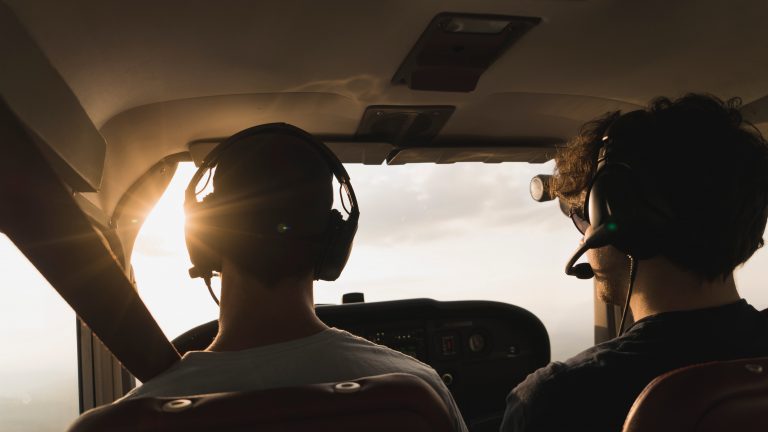Do you have fear of testing, or probably more accurately, a fear of failing a test!? If you have spent any time as a pilot, you know that tests and test anxiety is a real thing, and it can impact your career, if your goal is to be a professional pilot. Written tests, check-rides, flight reviews and instrument proficiency checks are just a few of the “tests” we expect as we go through our flying life, whether flying as a professional aviator or for ourselves on a Private certificate. Whatever your reason, preparation can be the key to not only achieving a successful check ride, but perhaps even enjoying it.

As I am writing this, I just had my Biannual Flight Review delayed from today to next week, due to the remnants of Hurricane Laura passing through the Gulf. I have to be honest, the postponement brought a sense of relief, even though I was prepared and looking forward to getting up in the airplane. So why is that?! I don’t think any of us enjoy being evaluated, which is technically what is happening during your BFR. Yes, you could fail (and probably should if you are not safe), but my experience throughout my career – both in the military and currently flying Part 91 – is that most Flight Instructors are there to teach, while also ensuring you are safe to exercise your privileges designated on your FAA Certificate. So, let’s treat it as a learning experience and take the time to better understand our aircraft, FARs and the basic flight maneuvers that we typically only repeat during these reviews.
My flight review is actually not due to December of this year, but there has been quite a bit of work done on my Baron since the first of this year. This work has included a fresh annual, a prop overhaul, adjustments of prop, throttle and mixture controls and the installation of two Garmin G5’s. The shop time has limited my Instrument flight time and approaches, so it is a good time to fly with my American Bonanza Society Instructor to ensure that both me and my aircraft are good to go.
One of the most valued insights of the flight training I received from the United States Navy was the importance of preparation. Show up for a flight without being prepared, and you will most likely never make it to the aircraft. If this happens more than a few times, you may soon find out you are not suited to become a Marine Corps Aviator.
So with this insight in mind, here is how I typically approach preparation for any check-ride:
- Make sure you know the aircraft – It’s time to pull out the Operating Handbook for your aircraft and assure you know it well, or re-learn it:
- Flows & Checklists
- Emergency Procedures – Memorize immediate action items
- Limitations
- Vspeeds
- Weight & Balance
- Performance Charts – understand applicability & use
- By the numbers – The American Bonanza Society teaches flying by the numbers, which is actually adopted from military training techniques. Do you know the numbers for your aircraft? Power settings, expected speeds and performance for each phase of flight? If not, you should study those and know them cold. You should be using this technique on each approach, whether instrument or VFR from the pattern so that you have a consistent flight profile each time you fly. If your make and model doesn’t provide this for you, then you can determine them yourself by knowing the appropriate settings that work for your aircraft, flying them consistently and demonstrating them for your instructor.
- Familiarity with FARs – You should be familiar with the FAR/AIM applicable to the ratings you carry, and the environment you fly within. Most instructors will not require you to memorize FAR’s, although Airspace, Medical Requirements and Airport markings are examples of knowledge pilots are expected to know.
- Aircraft Ownership, Systems & Airworthiness – Stop, right now, do you know 100% that your aircraft meets all airworthiness requirements? Are your ELT check, Transponder check, VOR check, Nav Databases, ADs and any other requirements of the aircraft you are flying current for your check within the FARs? As pilot of the aircraft, it is your responsibility and there are many stories of instructors showing up to conduct a check ride with an aircraft owner, only to find out the aircraft is not compliant with FAR’s due to a miss on one of these items. Not a great way to start your check ride! This is where Coflyt can help ensure that you are aware and understand the requirements for your airplane, along with the date or time when the next requirements are due – what we call #PilotPeaceofMind!
If you take care of these preparations prior to your check ride, then you should be in for a positive learning experience with a qualified instructor. It is something we all need from time to time, and as I mentioned earlier, you don’t have to wait two years for your BFR. Find an instructor that you trust, who knows your aircraft and call them when you feel like it is time for additional training or a flight review. It is often the case that you can also conduct a flight review while getting checked out in a new aircraft or adding a rating to your certificate, in essence “killing two birds with one stone”. But at the end of the day, the most important parameter for all pilots is safety. Be honest about your currency, knowledge and comfort within your aircraft and ensure you are doing everything necessary to fly safe!

